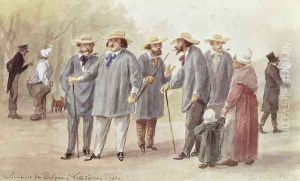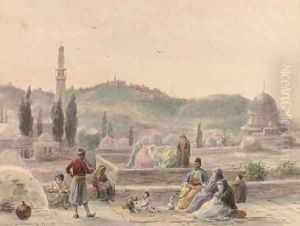Paul Chardin Paintings
Jean-Siméon Chardin is often mistakenly referred to as Paul Chardin, but his correct name is Jean-Siméon. He was born on November 2, 1699, in Paris, France. Chardin is considered one of the most masterful still life painters of the 18th century, as well as a notable genre painter. His father, Jean Chardin, was a cabinetmaker, which may have influenced the artist's attentiveness to the textures and details of the objects depicted in his work.
Chardin's works are known for their serene and meditative qualities, and his genre paintings often depicted domestic scenes with a remarkable sense of realism and dignity. He was admitted to the Académie Royale de Peinture et de Sculpture in 1728, upon presentation of 'The Ray' (La Raie) and 'The Buffet' (Le Buffet), which are two of his most iconic still lifes. His membership in the Academy allowed him to exhibit his works at the Salon, where his paintings were well received.
Throughout his career, Chardin received the patronage of Louis XV and was granted a pension. He was appointed as a councilor to the Academy in 1755. His works evolved from the lavish still lifes of his earlier period to more restrained and intimate domestic scenes. During the latter part of his career, Chardin began to work with pastels, which allowed him to explore a softer palette and more delicate textures.
Chardin's influence extended beyond his lifetime, with his works inspiring later artists such as Édouard Manet and Paul Cézanne. His art was celebrated for its poetic use of color, light, and composition. Chardin's depictions of common household items and ordinary scenes elevated the still life and genre painting genres, showing that beauty and profundity could be found in the everyday.
Jean-Siméon Chardin passed away on December 6, 1779, in Paris. Today, his paintings can be found in major museums around the world, and he is remembered as a key figure in the French Enlightenment's movement towards realism and away from the Rococo extravagance that preceded him.

